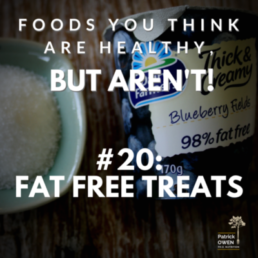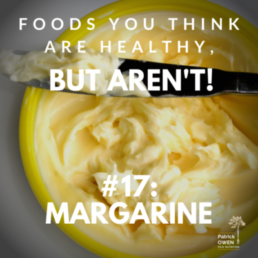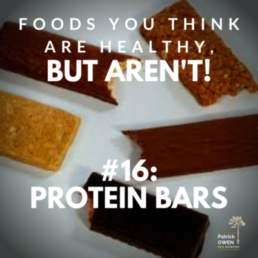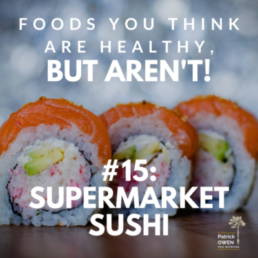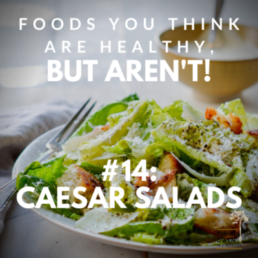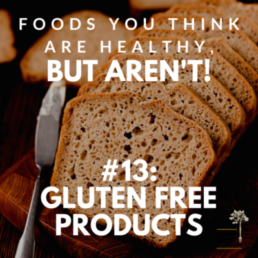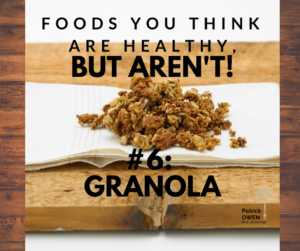
WHY WE THINK IT’S HEALTHY:
It’s considered the “healthy person’s cereal,” made with rolled oats, nuts and dried fruits. The term granola has become so synonymous with health that it’s used to describe hippie-esque people who are socially and environmental aware, left-wing, usually vegetarian, and who buy only fair-trade goods. All this is good for the planet and our souls, but nutritionally speaking, granola isn’t good for our waistlines.
WHY IT’S NOT:
Granola got its reputation as a health food in the 1960s because, at the time, it was a healthier option than the heavily sugared, frosted cereals on the market. Nowadays, granola is almost just as bad. A granola bar contains the same stuff you’d find in any other processed food: corn syrup, soybean oil, sugar and artificial flavours. Granola contains far more calories that you realize, averaging about 500 per small bowl. Even the natural organic brands that use honey, evaporated cane juice or beet sugar are high in calories. These sweeteners may sound healthier than regular old sugar, but they’ll still send your insulin levels skyward. Some brands have so much sugar that a bowl of the stuff has as much as a can of Coke.
Commercial granolas vary in sweetness, so check the ingredient list and the nutrition label before you buy a box. Ingredients that are listed first occur in the greatest quantity, so choose the ones where sugar (or one of its aliases) is listed somewhere down the middle of the list — not at the top.
Compare brands side-by-side and choose the one with more grams of fiber and fewer sugars. The fiber content and whatever nuts are in there are probably the only good thing about granola.


